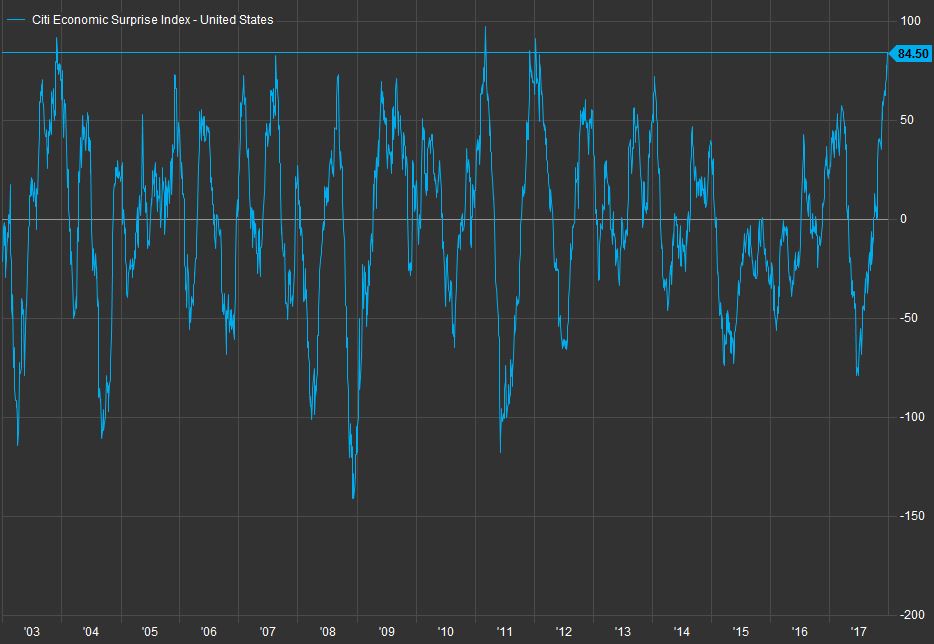The economy could be signalling too much of a good thing for stocks.
James Paulsen, chief investment strategist at Leuthold Group, warns that the Citi Economic Surprise Index is at one of the highest levels it’s ever been at and the third highest in the post-financial crisis recovery. The Citi surprise index is seen as a contrarian indicator for the stock market, and it registers gains when the economy outperforms Wall Street expectations.
“When it gets this good, I think it says something about people’s expectations and how hard it will be to impress them. If you go back a year ago, it looked like we were growing at 2 percent, but it turned out that we were growing by 3 percent. A year ago, no one thought we were in a synchronized global expansion. Now everyone does. If it stays good, it will not impress anybody, let alone surprise. It will not be the same upward trajectory,” he said. “It won’t surprise anyone if it stays good but what if inflation and overheating pressures build up? That’s why I think returns go down when the economy is this good.”
From housing to jobs, the recent economic data have contained a solid stream of surprises. Consumer sentiment, however, on Wednesday missed expectations for December, declining to 95.9 after rising to a decade high this fall.

Paulsen studied stock market performance versus the surprise index, which is now around 84. When it has risen above 70, the average six-month returns of the S&P 500 have only been 2.75 percent. Returns have averaged 4.5 percent when the Citi index was above 60.
The stock market does best when the index is between minus 50 and plus 50, says Paulsen. When the surprise index was in the “not too hot, not too cold” range, the average six-month returns of the S&P was 12.4 percent.
Stocks also have done relatively well even after economic surprises have been disappointing. For example, when the surprise index has been minus 85 or below, stocks have still yielded a solid 8.1 percent average annualized future six-month return.
Paulsen has a relatively bearish outlook for 2018, versus other Wall Street strategists, several of whom have forecasts of 3,000 or better for the S&P 500.

Source: Leuthold Group
“I think we’re going to have a 10 to 15 percent correction this year, a good gut check and that might be a good buying opportunity,” he said. “I just don’t know where we’re going to end the year. I think we could end down for the year, but not that much.” The S&P 500 is up about 20 percent year to date and was at 2,681 Wednesday afternoon.
Source: Investment Cnbc
When the economic news is this good, history shows the gains are smaller for stocks